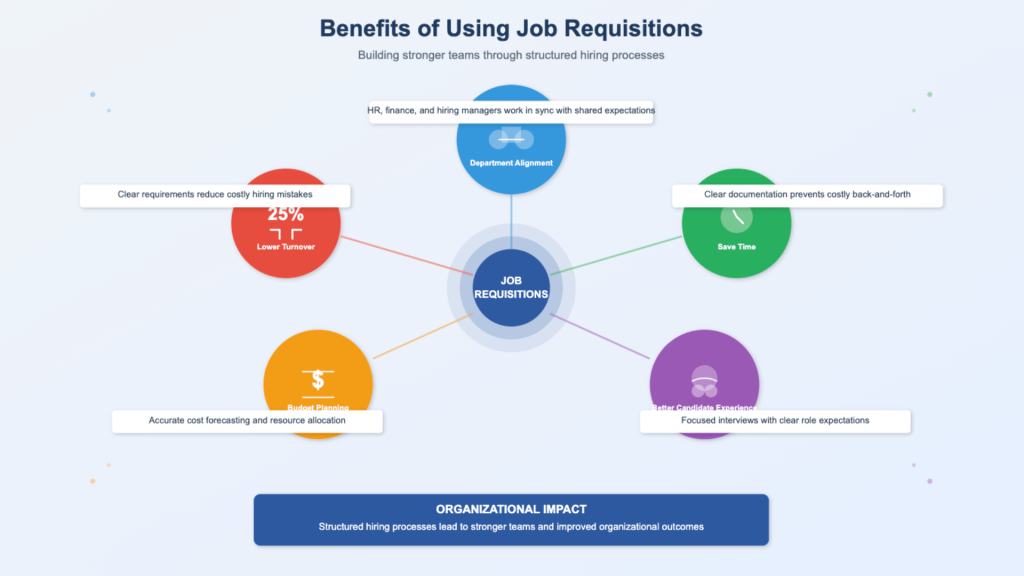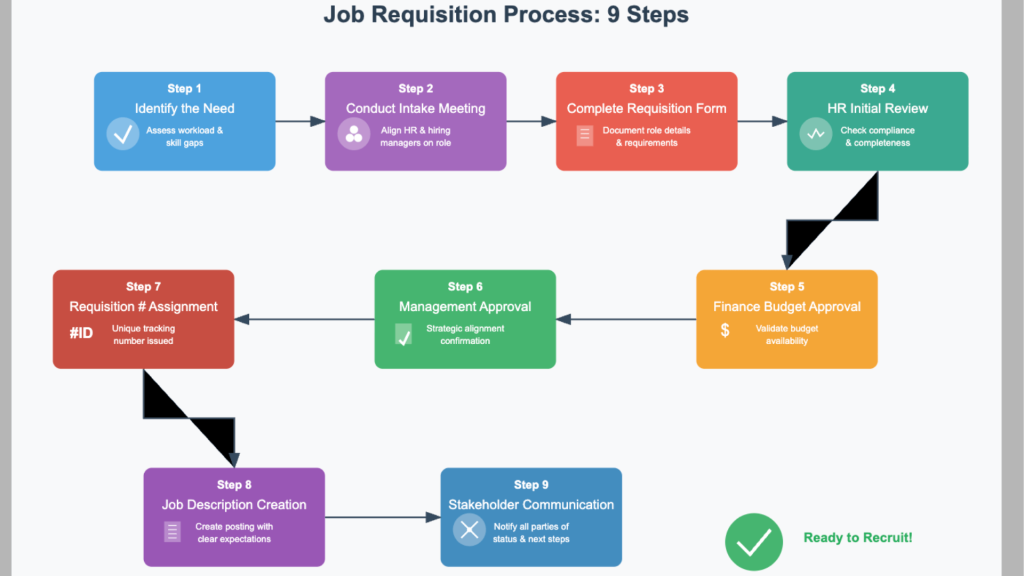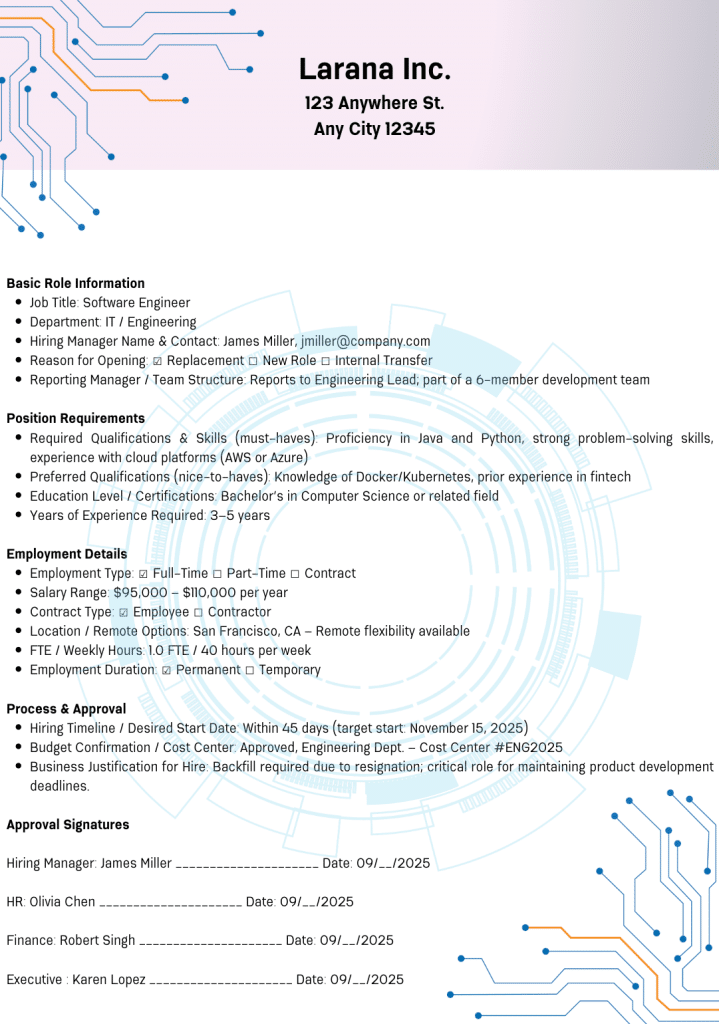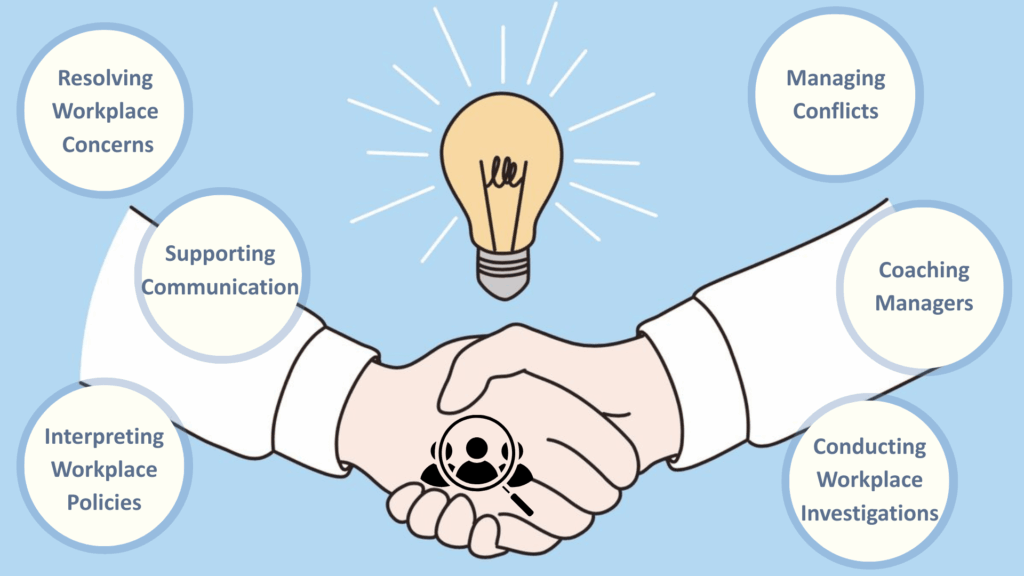Consider yourself interviewing dozens of candidates, only to realize the role requirements were unclear from the start.
This hiring chaos occurs when organizations skip the proper job requisition process.
A job requisition is the crucial first step that prevents costly hiring mistakes and ensures every stakeholder is aligned before the recruitment process begins.
What follows covers everything you need to know about job requisitions: their purpose, key elements, step-by-step process, and a ready-to-use template.
By the end, you’ll have the tools to implement a structured requisition process that streamlines your hiring and improves candidate quality.
What is a Job Requisition?
A job requisition is a formal internal document that hiring managers use to request approval for creating a new position or filling an existing role.
It includes details like job title, department, salary range, qualifications, and justification for the hire.
Once approved by HR and management, it serves as the foundation for creating job descriptions and job postings.
This document serves as the official starting point for all recruitment activities, ensuring that hiring decisions are made through proper organizational channels and in accordance with budget approvals.
Purpose of a Job Requisition
Job requisitions are essential for a structured hiring process, confirming role necessity and resource availability.
They align HR, finance, and leadership, ensuring approval before starting recruitment and avoiding errors.
These functions can be grouped into four key purposes of a job requisition:
1. Secures Organizational Approval: Every new hire represents a significant investment. Job requisitions ensure that hiring decisions align with the company’s strategy and receive proper authorization from leadership and finance teams.
2. Confirms Budget and Resources: Before posting any job, requisitions verify that sufficient budget exists for salary, benefits, equipment, and training costs. This prevents situations where great candidates are found but can’t be hired due to budget constraints.
3. Provides Clarity on Position Requirements: By documenting specific role requirements upfront, requisitions ensure that HR, recruiters, and hiring managers are all working toward the same candidate profile and expectations.
4. Acts as Official HR Record: Job requisitions create a paper trail for compliance purposes, budget tracking, and future workforce planning decisions. They document the business justification for every hire.
Benefits of Using Job Requisitions

It brings clarity and consistency from the start, ensuring alignment across departments and preventing costly miscommunications.
The benefits can be seen across multiple areas of organizational performance, including:
1. Creating Alignment Between Departments: When HR, finance, and hiring managers review requisitions together, it eliminates conflicting expectations and ensures everyone understands the role’s importance and requirements.
2. Saving Time by Preventing Miscommunications: Clear upfront documentation prevents the back-and-forth that often occurs when role requirements are unclear or stakeholders have different expectations.
3. Improving Candidate Experience: When hiring teams know exactly what they’re looking for, candidates experience more focused interviews and clearer communication about role expectations and next steps.
4. Enabling Better Budget Planning: Finance teams can accurately forecast hiring costs and ensure adequate resources are allocated for successful recruitment and onboarding.
5. Reducing Hiring Mistakes and Costly Re-hires: Studies show that companies with structured hiring processes have 25% lower turnover rates, largely because role requirements are clearly defined from the start.
These benefits show how job requisitions not only support efficient hiring but also contribute directly to stronger teams and improved organizational outcomes.
Job Requisition vs Job Description vs Job Posting
Each document serves a unique purpose, targets different audiences, and is used at distinct stages of recruitment to ensure a smooth and efficient hiring journey.
| Document | Purpose | Audience | Key Content | When Used |
| Job Requisition | Internal approval request to get permission to hire | HR, finance, leadership | Business justification, budget approval, basic role parameters | Before recruitment begins |
| Job Description | Detailed role requirements for the hiring team | Internal hiring team, candidates during interviews | Specific duties, responsibilities, qualifications, and reporting relationships | During candidate evaluation |
| Job Posting | External advertisement to attract candidates | External job seekers on job boards | Appealing role highlights, company information, and application instructions | When recruiting publicly |
Timeline Job Requisition → Job Description → Job Posting
Key Elements in a Job Requisition
A job requisition is only effective when it captures all the essential details needed for informed decision-making.
Including comprehensive information prevents miscommunication between HR, finance, and hiring managers.
A clear structure also ensures that requisitions meet compliance and budgeting requirements.
The following elements are typically included in a well-prepared job requisition-
Basic Role Information:
- Job title and department
- Hiring manager name and contact information
- Reason for opening (new role, replacement, internal transfer)
- Reporting manager and team structure
Position Requirements:
- Required qualifications and skills (must-haves)
- Preferred qualifications (nice-to-have)
- Education level and certifications needed
- Years of experience required
Employment Details:
- Salary range and employment type (full-time, part-time)
- Contract type (employee vs contractor)
- Location requirements and remote work options
- FTE/weekly hours specification
- Employment duration (permanent vs temporary)
Process and Approval:
- Hiring timeline and desired start date
- Budget confirmation and cost center
- Approval signatures required (HR, finance, executive)
- Business justification for the hire
Step-by-Step Job Requisition Process

A structured process ensures job requisitions move smoothly from request to approval, avoiding unnecessary delays.
It provides transparency at every stage, ensuring clarity in need identification and final authorization while keeping stakeholders aligned.
Step 1: Identify the Need
Hiring managers assess workload, skill gaps, or backfill requirements to decide if a new hire is necessary, ensuring the decision is based on real business needs rather than guesswork.
A clear understanding of the gap defines the role’s purpose and prevents mismatched hires later.
Step 2: Conduct Intake Meeting
HR and hiring managers meet to align on role specifics, candidate profiles, and expectations, covering team dynamics, required skills, and the candidate’s contribution to overall goals.
This discussion highlights potential challenges and sets a strong foundation for an effective requisition.
Step 3: Complete Requisition Form
The requisition form captures responsibilities, qualifications, and reporting structure, requiring detailed information to avoid ambiguity and delays.
This document serves as the basis for approvals and guides the job posting to set clear candidate expectations.
Step 4: HR Initial Review
HR checks the requisition for completeness, accuracy, and compliance with policies to ensure it aligns with workforce planning and diversity goals.
This review also verifies consistency across job levels and salary bands to avoid future discrepancies.
Step 5: Finance Budget Approval
Finance validates whether funds are available to cover salary, benefits, and related costs, ensuring the hire fits into the company’s budget.
If the budget wasn’t pre-approved, this step is critical for confirming financial sustainability.
Step 6: Management Approval
Department heads or executives review the requisition for strategic alignment, assessing whether the role supports current priorities and long-term goals.
This approval serves as the final checkpoint before recruitment can begin.
Step 7: Job Requisition Number Assignment
Once approved, HR assigns a unique requisition number that helps track the role and streamline communication between HR, finance, and leadership.
This identifier also supports reporting and accountability throughout the hiring process.
Step 8: Job Description Creation
Using the approved requisition, HR creates a job description and posting that outline responsibilities, qualifications, and expectations clearly.
This step connects internal approvals with external recruitment to attract qualified candidates.
Step 9: Stakeholder Communication
HR and hiring managers notify all stakeholders of the requisition status, including approvals, requisition number, and next recruitment steps.
Typical Timeline: Most requisitions are approved within 5-10 business days; however, executive-level positions or budget-intensive roles may require longer processing times.
Job Requisition Template & Example
A practical template makes it easier to create job requisitions that are complete, consistent, and ready for approval.
It ensures no critical details are missed and provides a standardized format for HR and managers to follow.
Using a sample form also helps teams visualize how requisitions should be structured.
You can download the requisition template by clicking here.
Below is a simple template and example that organizations can adapt to their needs:
Sample Job Requisition Form
Basic Role Information
Position Requirements
Employment Details
Process & Approval
Approval Signatures Hiring Manager: _____________________ Date: ___________ HR: _____________________ Date: ___________ Finance: _____________________ Date: ___________ Executive : _____________________ Date: ___________ (optional) |
Example: Digital Marketing Manager Position

Tips to Avoid Common Mistakes
These tips will help you stay on track and create a requisition that aligns with organizational goals and expectations.
- Don’t leave salary ranges too vague – Research market rates and provide realistic ranges that finance has pre-approved
- Always include proper justification – Use specific metrics like workload increases, revenue goals, or productivity gaps
- Ensure budget approval before submission – Confirm with finance that funding is available to avoid delays
- Specify remote/location requirements clearly – Include exact office days, travel requirements, and equipment needs
- Get stakeholder alignment during the intake meeting – Ensure hiring manager, HR, and team leads agree on priorities and must-have qualifications
Conclusion
A job requisition is the strategic foundation that sets your entire hiring process up for success.
By securing proper approvals, confirming budget availability, and aligning all stakeholders on role requirements, job requisitions prevent costly miscommunications and hiring mistakes.
Companies with comprehensive job requisition processes see measurable improvements in time-to-hire, candidate quality, and employee retention.
The upfront investment in creating detailed requisitions pays dividends throughout recruitment and beyond.
Ready to upgrade your hiring process? Start implementing a standardized job requisition template today.
Have any thoughts on job requisitions? Leave a comment below to join the conversation!
Frequently Asked Questions
Can Job Requisitions Be Modified After Approval?
Minor changes like salary adjustments or timeline updates typically require re-approval. Major changes to role scope or requirements usually need new requisitions.
Can Emergency Hires Bypass the Job Requisition Process?
Most companies have expedited approval processes for critical roles. However, retroactive requisitions are typically required for compliance and budget tracking purposes.
How Long Are Approved Job Requisitions Valid?
Job requisitions typically remain active for 90 to 180 days. Extended searches may require the renewal of requisitions or updates to reflect current market conditions.
Do Internal Transfers Require Job Requisitions?
Internal transfers to existing roles typically don’t need requisitions. However, role changes, promotions, or new positions usually require formal requisition processes.










